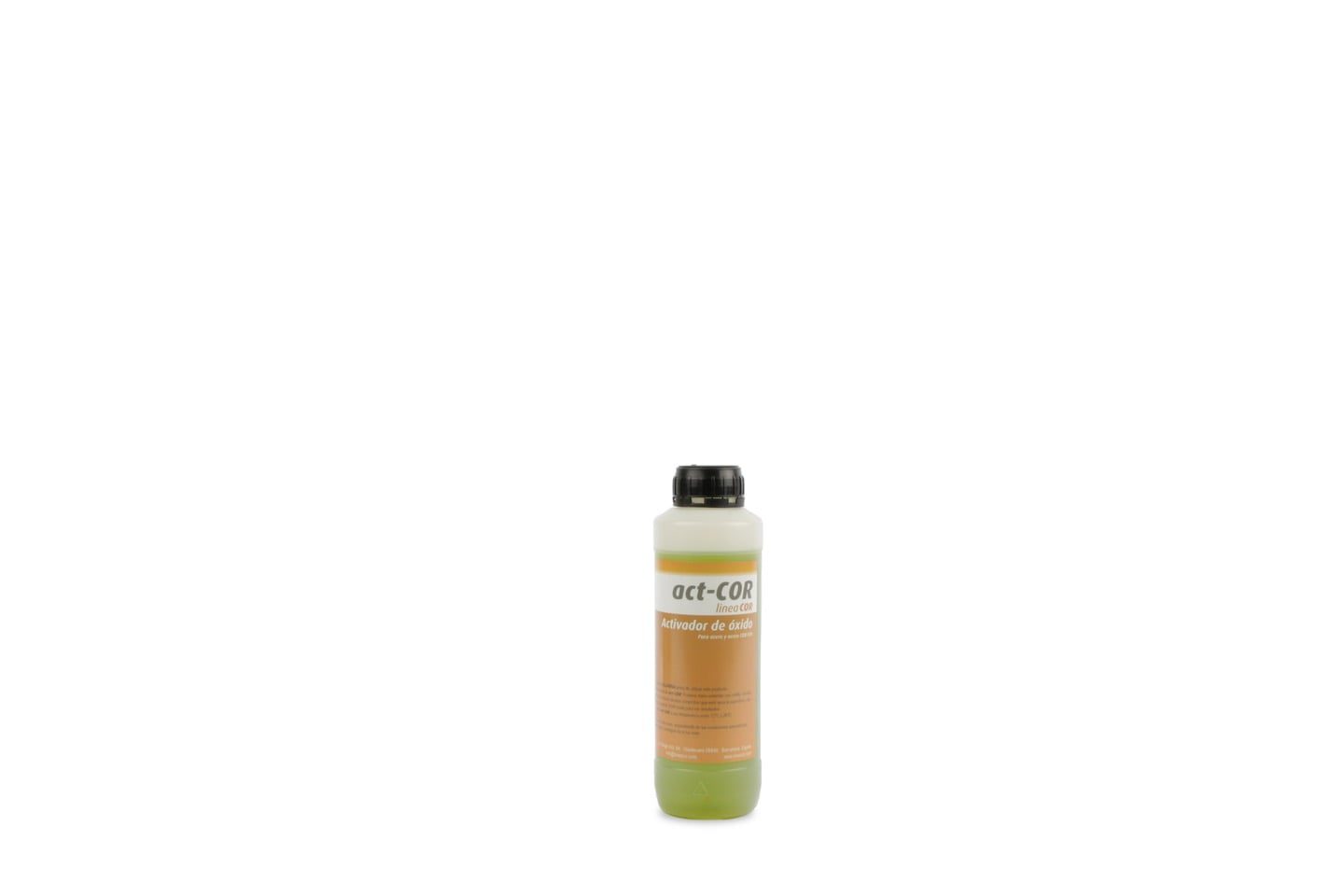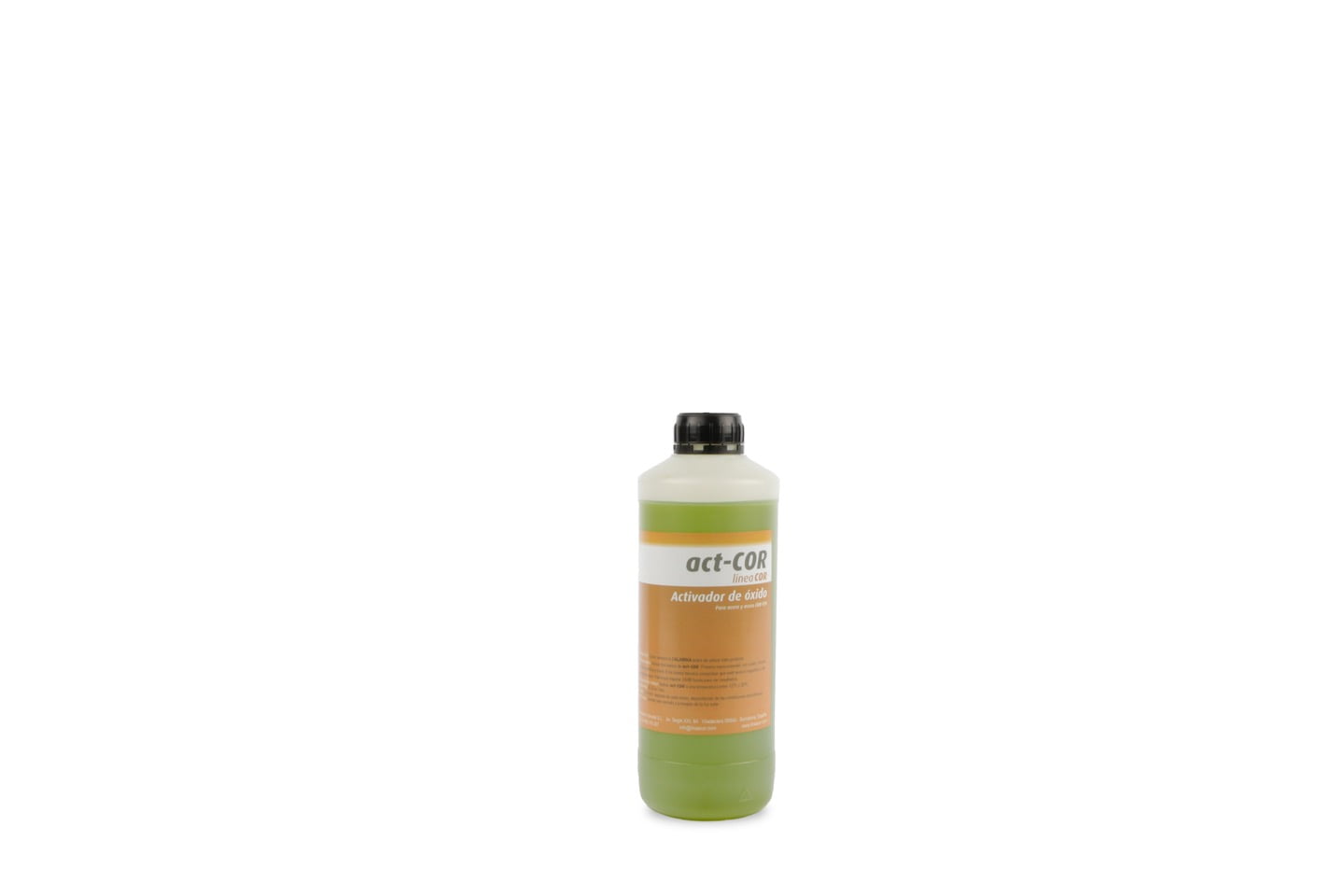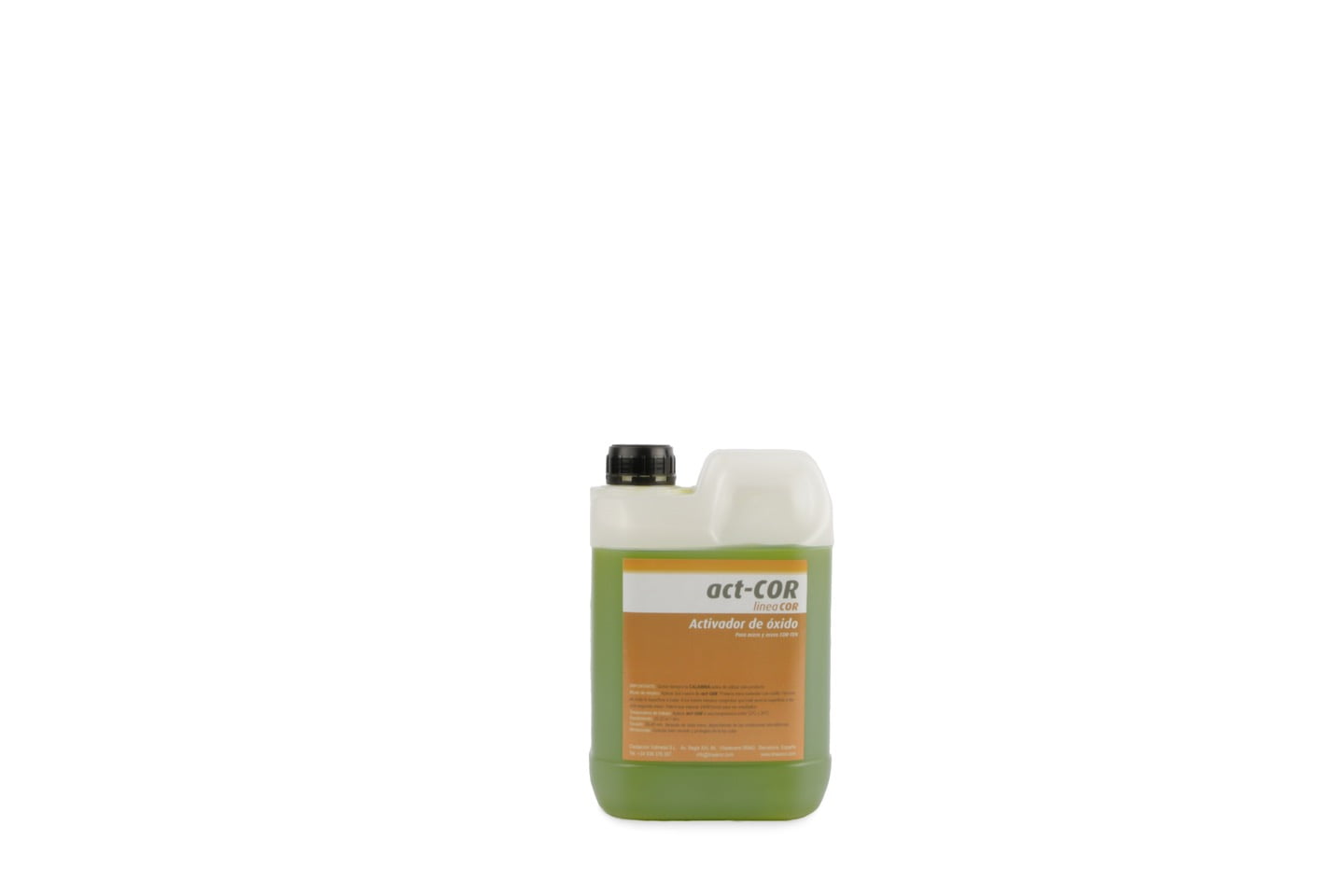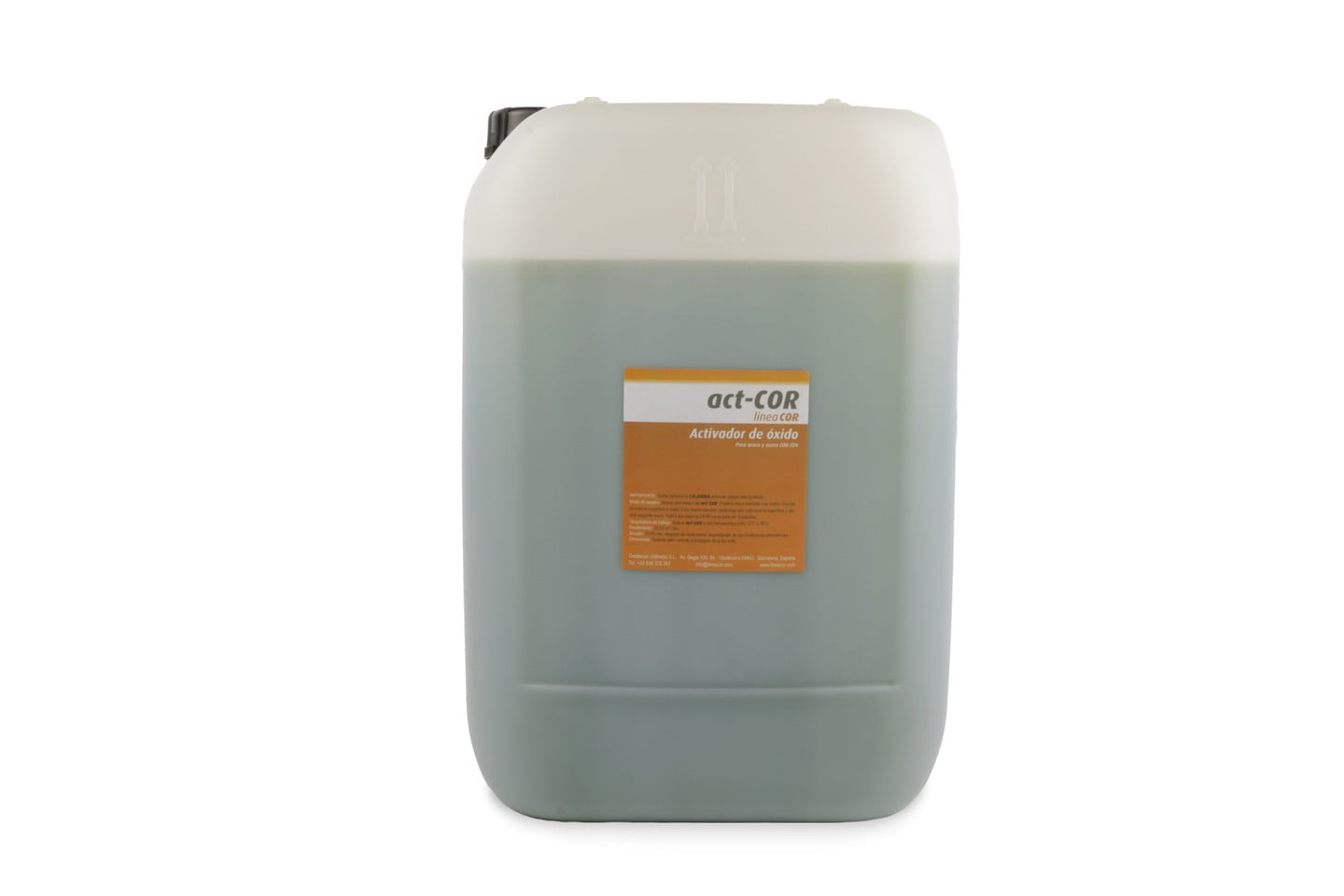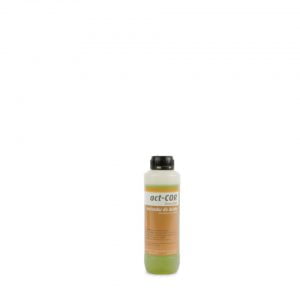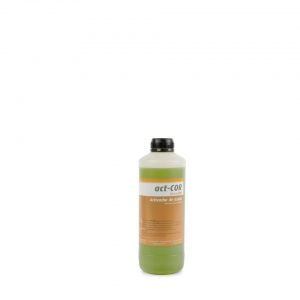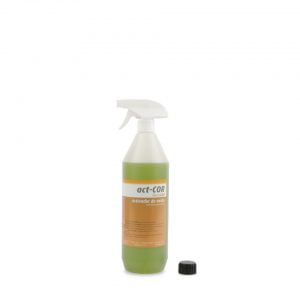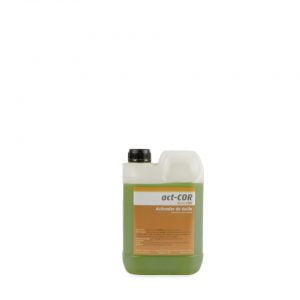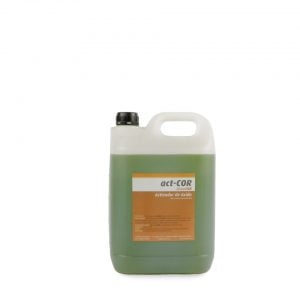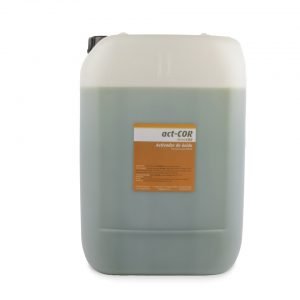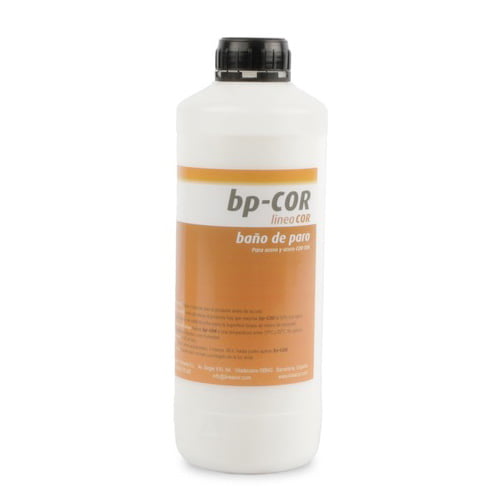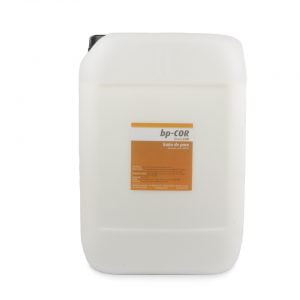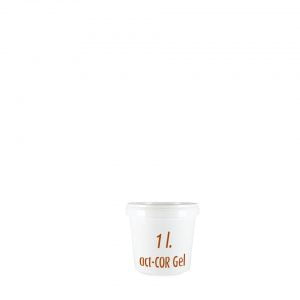17,00€ – 676,00€
act-COR oxide activator can achieve oxidation of metallic surfaces such as steel or corten steel in record time, with the best results guaranteed, in a controlled manner and with maximum efficiency. The product is safe to use, it is a water-based solution containing oxide derivatives, and initiates oxidation only on the outer surface layer of the steel. It can be used on thin sheets of steel with a value of up to 0.8mm, without having any impact on the structural integrity. If the steel has been cold-rolled, make sure the surface has been cleaned before applying it; and if hot-rolled, the MILL SCALE layer must have been removed first.
Oxidation of the steel is achieved by applying two or three layers of the product, allowing 90 minutes drying time between coats. Different oxidation tones can be achieved: light oxidation, dark, uniform, uneven etc. The effect will be influenced by factors such as humidity, temperature and exposure to the sun, as well as by the various procedures followed for its application.
act-COR is also available as a gel (act-COR Gel) and in this format, provides an optimal solution for applications in difficult-to-reach areas or for vertical installations, for example. In addition, the use of act-COR Gel allows you to “model” the effects created by the oxidation process, giving you greater control over the final appearance of the oxidised steel.
VERY IMPORTANT: If the MILL SCALE is not totally removed, the oxidation process cannot be controlled and, for sure, any treatment applied to the steel can crack or result in osmosis taking place. This can happen over time, the speed of which is dependent on the environmental conditions that the steel is being exposed to.
Please read the product’s Technical Data Sheet and Safety Data Sheet carefully, to ensure understanding of how the product needs to be applied and to comply with relevant safety and environmental regulations.
FREQUENTLY ASKED QUESTIONS
Yes, it is. In addition, this product, due to its versatility, allows you to create very original “forced” oxidations which would be very difficult to achieve from natural oxidization.
Yes, like many other products, the effectiveness and performance are impacted by the ambient temperature. At lower temperatures, the speed of the oxidation is reduced. And, for example, with a high ambient temperature, evaporation increases, hence decreasing the effectiveness of the product.
This is very difficult, as the product will barely penetrate the mill scale and you will end up using a lot of it. But the biggest problem associated with not removing the mill scale is that the resulting oxidization will be unpredictable and can, in the future, result in damaged areas or produce considerable amounts of oxide dust, etc. On the other hand, if you are trying to achieve a “rough” or “battered” look, to apply the product in this way is appropriate.
Normally 2 layers are enough, although to perform certain jobs or depending on what conditions you are working under, additional coats could be required.
The activating product, the sun, ambient temperature, humidity and salinity can all have impacts.
No, never do this, as it burns and the surface will become black.
It is difficult to give a precise answer, as it would be necessary to carry out multiple tests with the various other products that are available. We focus on making these tests between our own products. Therefore we do not recommend using other manufacturer’s products in combination with our own.
Yes, but you should carry out a test on a small part of the metal sheet prior to tackling the whole sheet. If you are a professional, we recommend you take a training course so you can learn about the different techniques that you can use, helping you to achieve greater returns and improved efficiency when working with corten steel.
No, as this will cause a change in the product’s properties, giving different results to those desired or described by the manufacturer.
Yes, but be aware that iron does not possess the same properties as steel (they are very different alloys) and especially in the case of outdoor use, it will evolve in a different way. It will also depend on the thickness of the iron.



